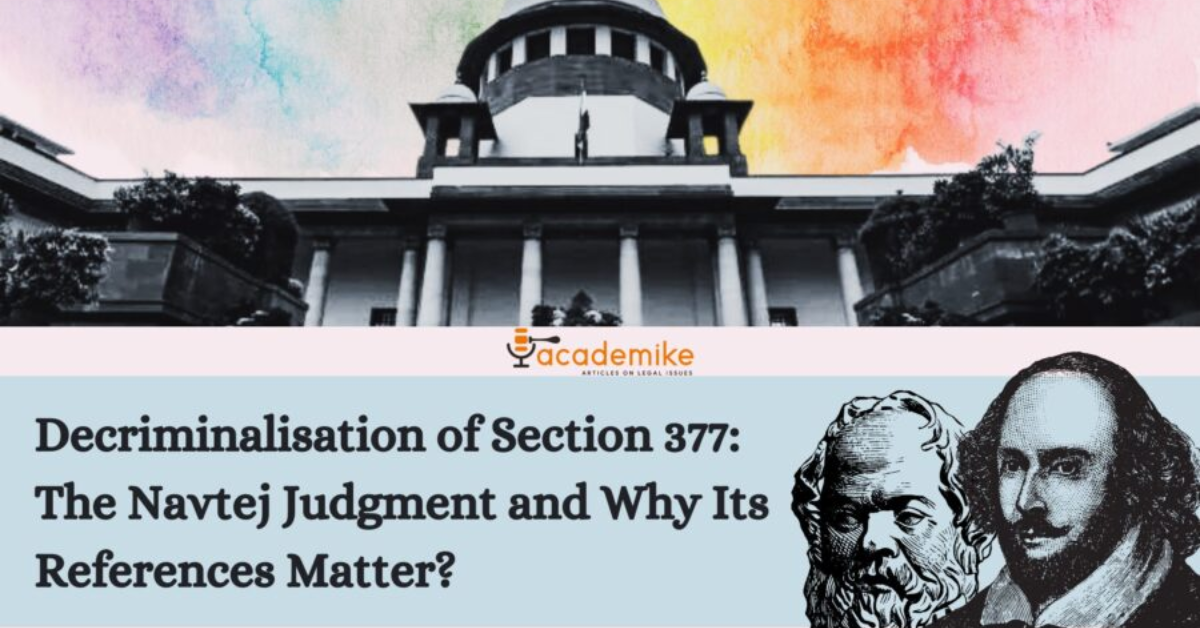Section 377 of the Indian Penal Code (IPC) was a colonial-era law that criminalized homosexuality in India. The law, originally introduced in 1861 during British rule, categorized same-sex relationships as “unnatural offenses,” punishable by imprisonment. However, after years of legal battles and activism, the Supreme Court of India decriminalized homosexuality in a landmark judgment in 2018. This decision was a historic step toward equality and human rights, recognizing the LGBTQ+ community’s fundamental rights in India.
Historical Background of Section 377
Section 377 was introduced as part of the British-imposed legal system in India. It was based on Victorian-era morality that considered same-sex relationships as unnatural and criminal. The law stated:
“Whoever voluntarily has carnal intercourse against the order of nature with any man, woman or animal, shall be punished with imprisonment for life or with imprisonment of either description for a term which may extend to ten years, and shall also be liable to a fine.”
This broad and vague definition led to widespread misuse of the law, often resulting in discrimination and harassment against the LGBTQ+ community. The law not only criminalized consensual same-sex relationships but also contributed to societal stigma and exclusion.
The Fight for Decriminalization
The struggle against Section 377 spanned decades, involving multiple legal battles and activism from LGBTQ+ organizations, legal experts, and human rights advocates. Key milestones in this journey included:
- Naz Foundation Case (2009) – The Delhi High Court ruled in favor of decriminalizing consensual homosexual acts, stating that Section 377 violated the fundamental rights to privacy, dignity, and equality.
- Supreme Court Reinstates Section 377 (2013) – In the Suresh Kumar Koushal v. Naz Foundation case, the Supreme Court overturned the Delhi High Court’s judgment, stating that only the legislature had the power to change the law.
- Navtej Singh Johar Case (2018) – In a historic ruling, the Supreme Court of India unanimously struck down Section 377, decriminalizing homosexuality and affirming the dignity, equality, and privacy of LGBTQ+ individuals.
The 2018 Supreme Court Judgment
On September 6, 2018, the Supreme Court of India delivered a landmark judgment in Navtej Singh Johar v. Union of India, reading down Section 377 to exclude consensual same-sex relationships from criminal offenses. The key highlights of the judgment included:
- Recognition of LGBTQ+ Rights: The ruling emphasized that LGBTQ+ individuals have the same fundamental rights as other citizens, including the right to live with dignity and freedom.
- Right to Privacy: The Supreme Court linked its decision with the Right to Privacy judgment (2017), affirming that private consensual relationships should not be subject to legal interference.
- Apology to LGBTQ+ Community: The Court acknowledged the historical injustice faced by LGBTQ+ individuals and issued an apology for the harm caused by Section 377.
Impact of the Judgment
The decriminalization of homosexuality in India was a significant step towards inclusivity and equality. Some of the key impacts include:
- Social Acceptance: The ruling encouraged greater acceptance of LGBTQ+ individuals in society, prompting conversations about inclusivity and equal rights.
- Legal Recognition: While same-sex marriages and adoption rights are still not legally recognized, the judgment paved the way for further legal reforms.
- Corporate and Workplace Policies: Many companies introduced LGBTQ+-friendly workplace policies, ensuring diversity and equal opportunities for all employees.
- Mental Health and Well-being: The decision helped reduce stigma, discrimination, and mental health issues faced by LGBTQ+ individuals.
Challenges and the Road Ahead
Despite the victory in 2018, challenges remain for the LGBTQ+ community in India:
- Legal Recognition of Same-Sex Marriages: India still does not legally recognize same-sex marriages, leaving LGBTQ+ couples without rights related to inheritance, adoption, and spousal benefits.
- Social Stigma: Many LGBTQ+ individuals continue to face discrimination from families, workplaces, and society.
- Trans Rights and Inclusion: The LGBTQ+ movement also intersects with the rights of transgender individuals, who face additional legal and social challenges.
Conclusion
The decriminalization of homosexuality in India through the striking down of Section 377 was a historic moment in the fight for equal rights. However, the journey toward full equality is still ongoing. Legal recognition of same-sex marriages, anti-discrimination laws, and societal acceptance are the next major milestones for the LGBTQ+ movement in India. As the country progresses, continued activism and awareness will be crucial in ensuring equal rights for all citizens, regardless of their sexual orientation.

